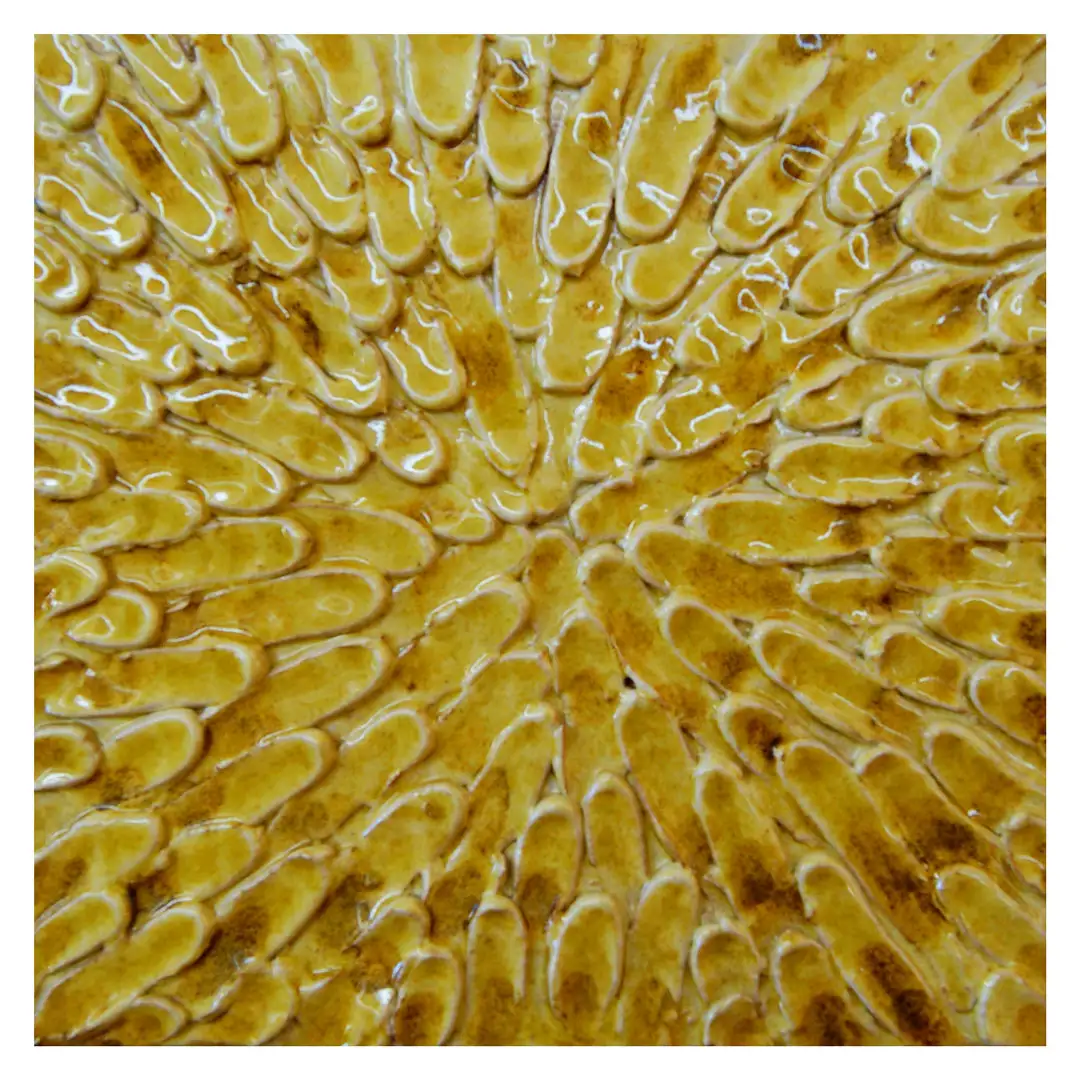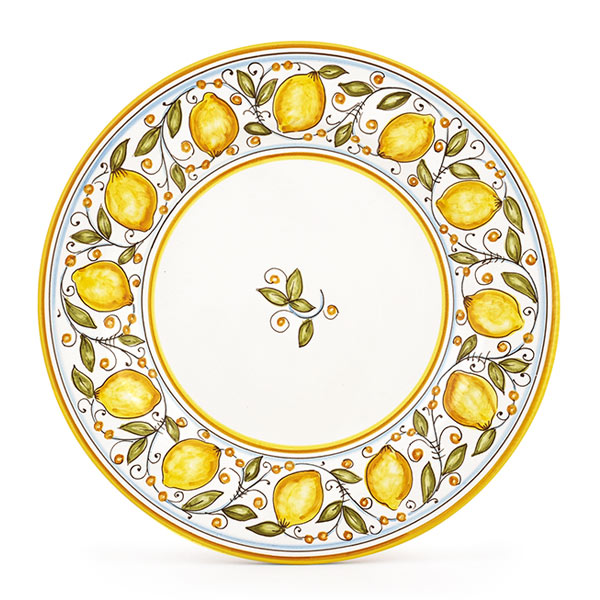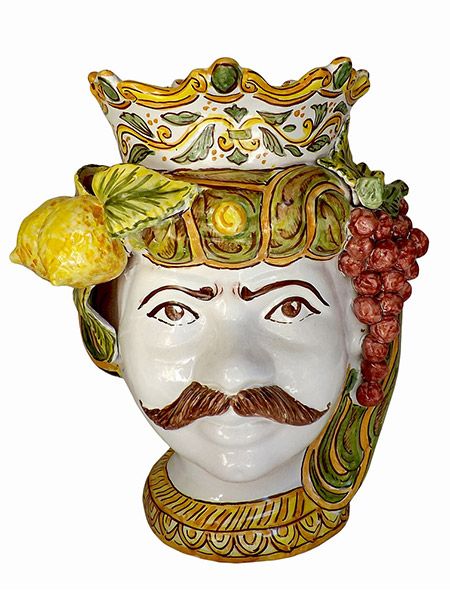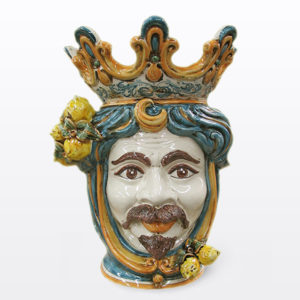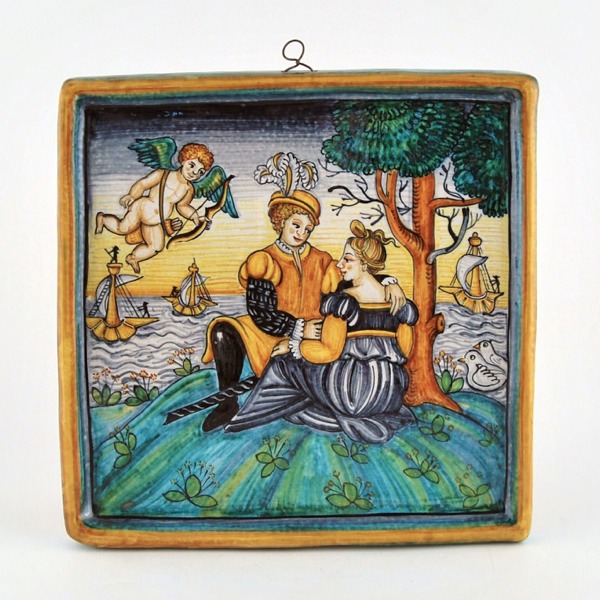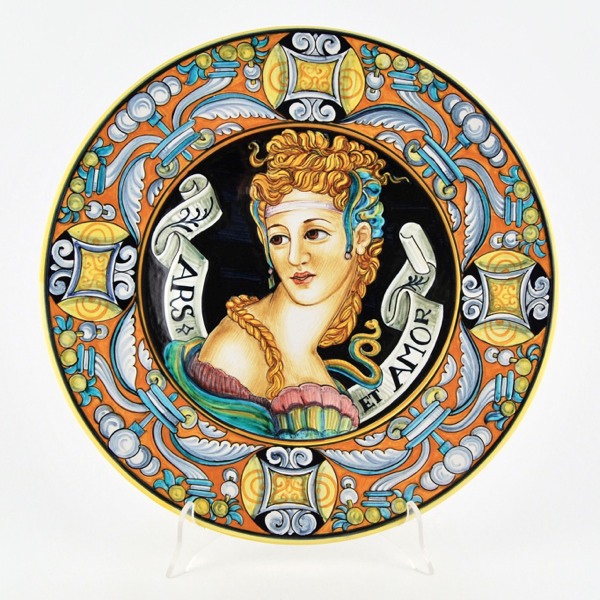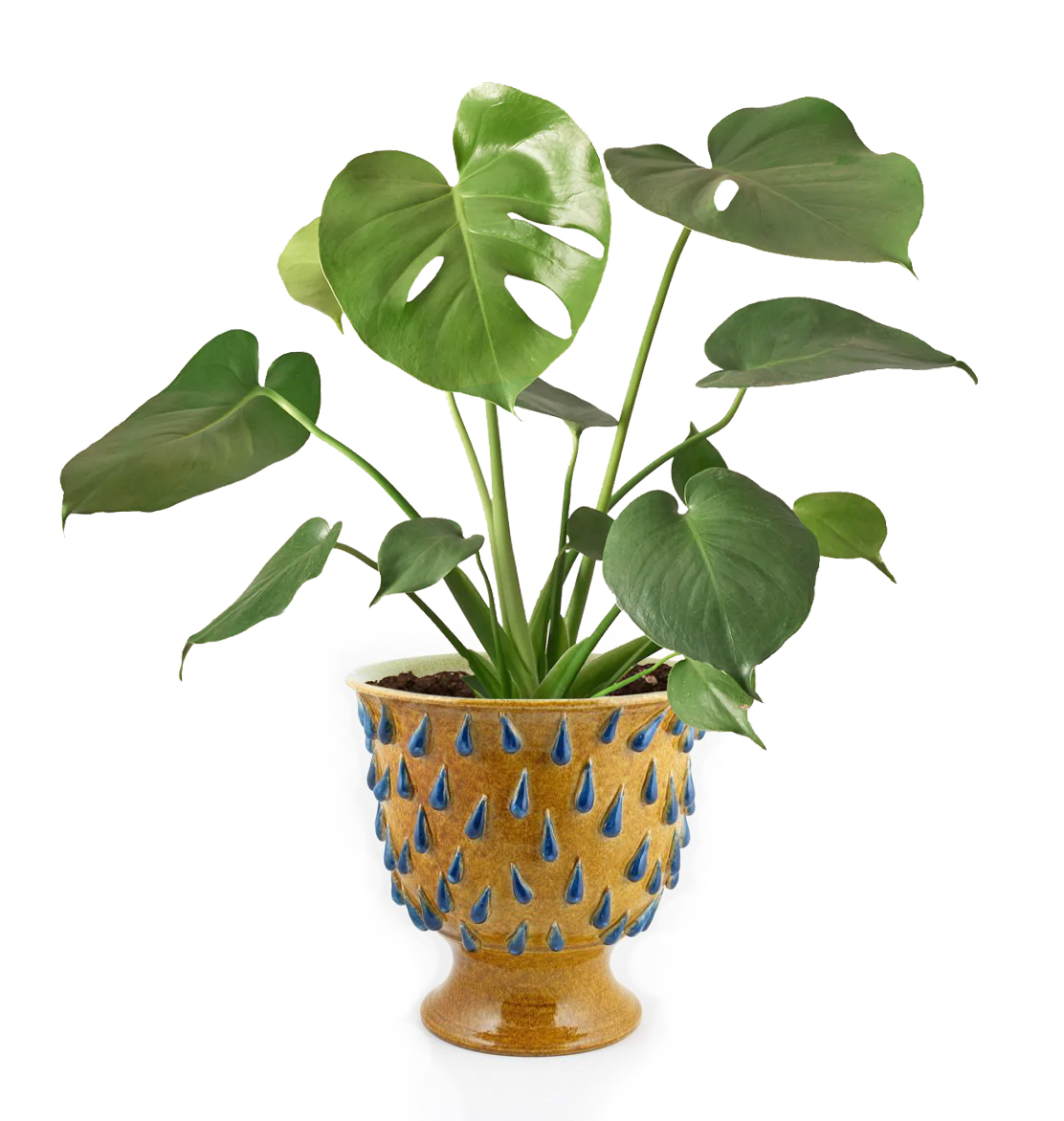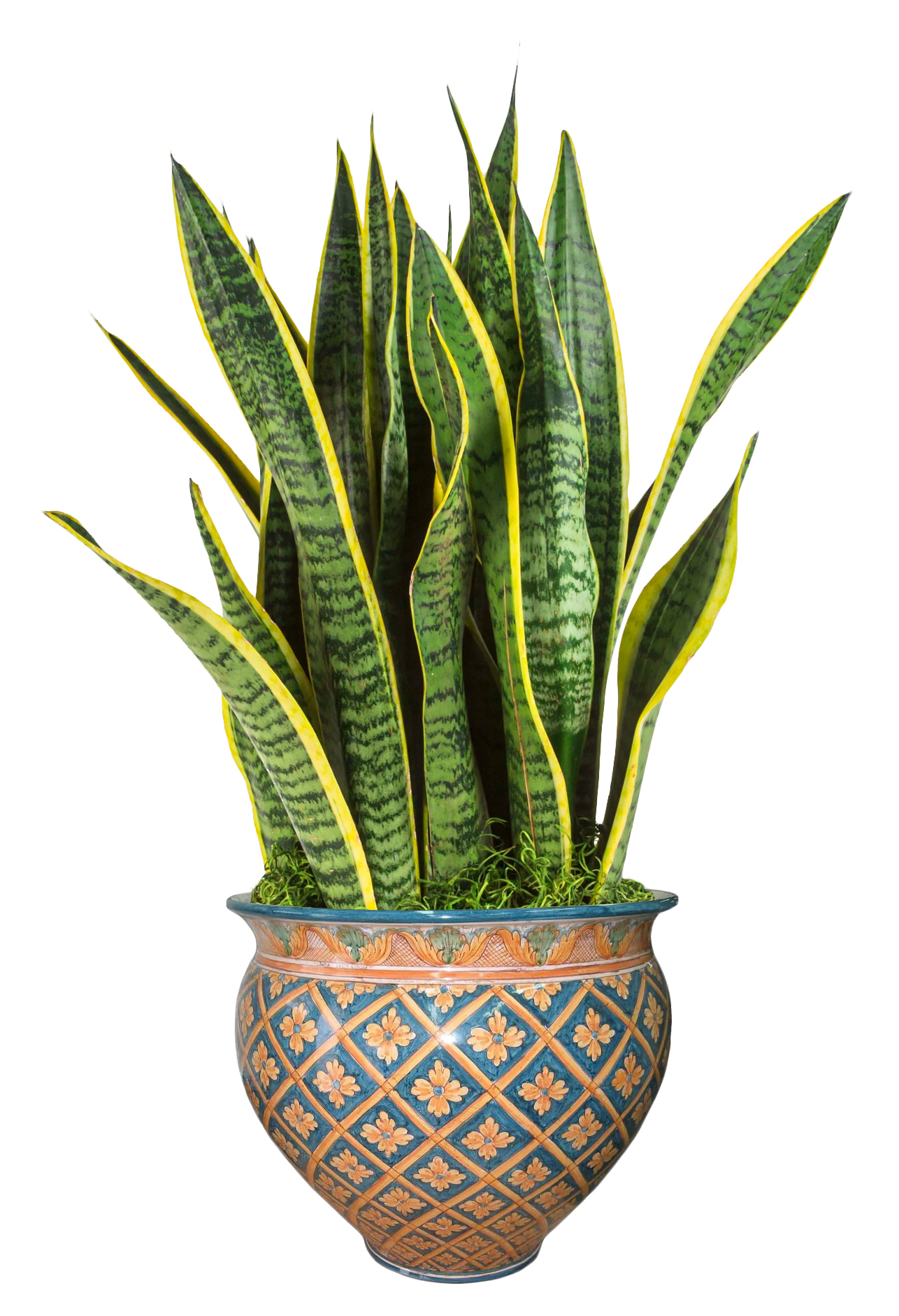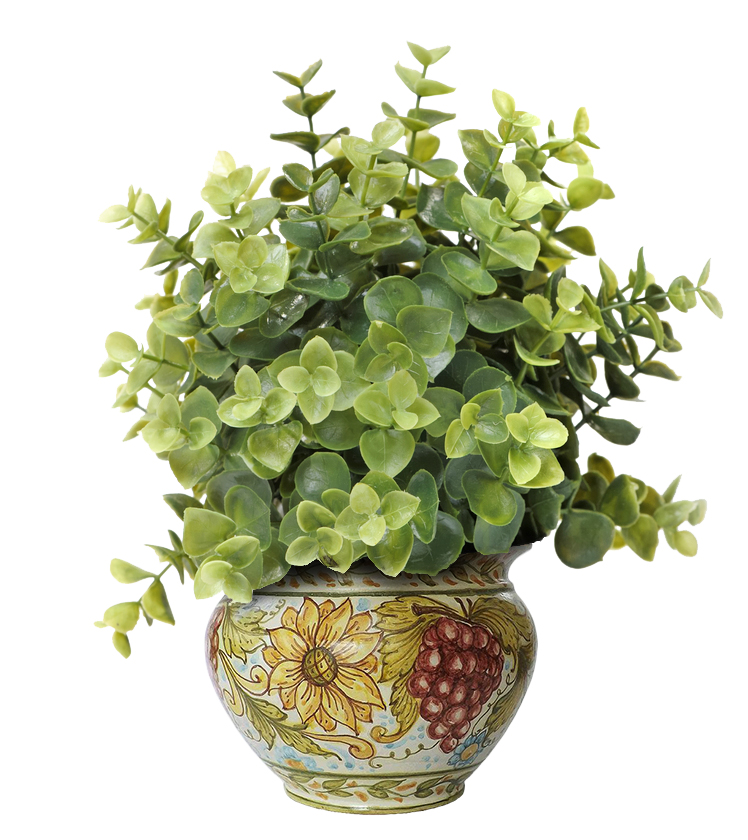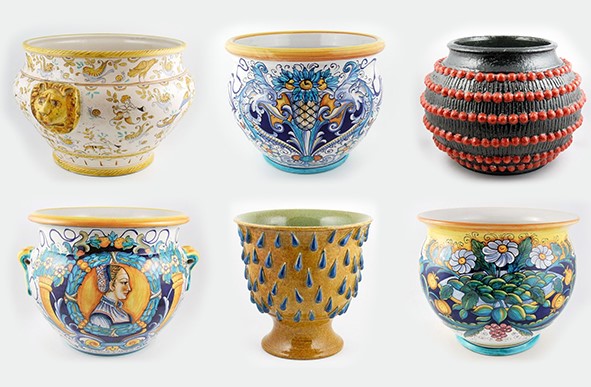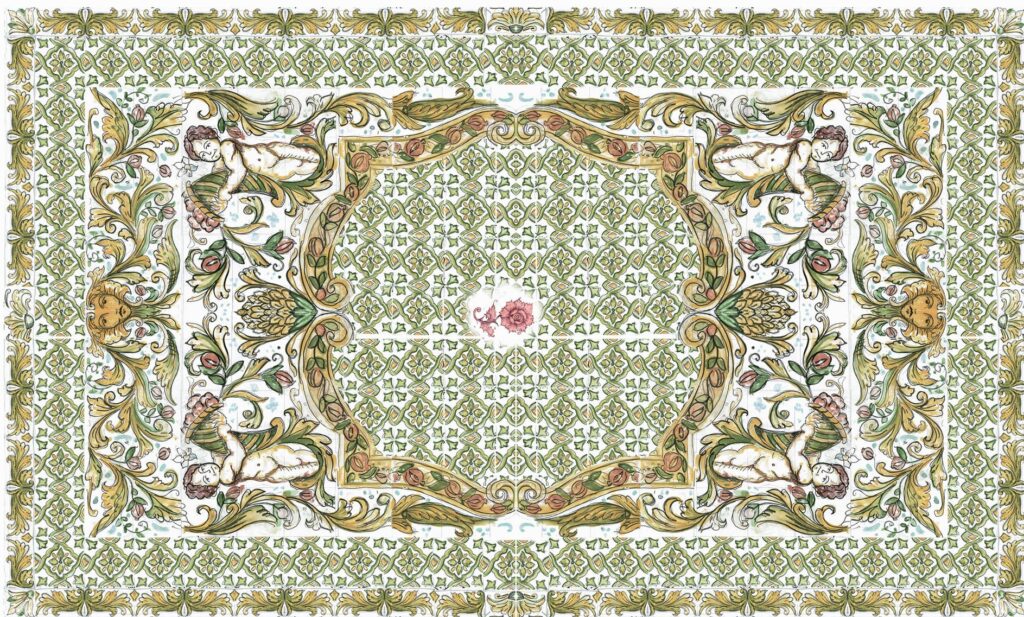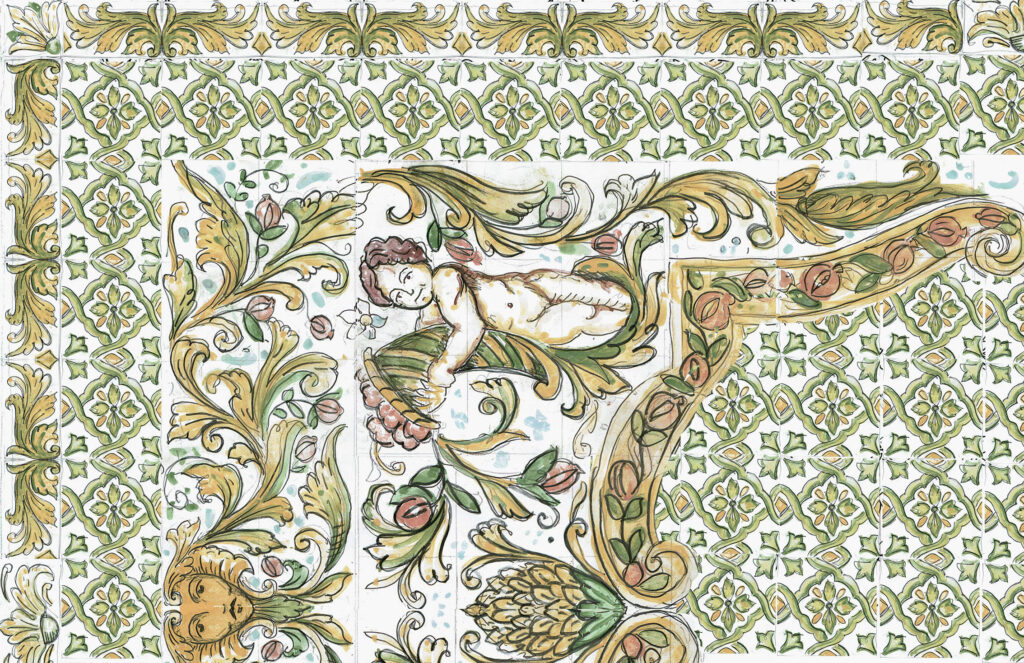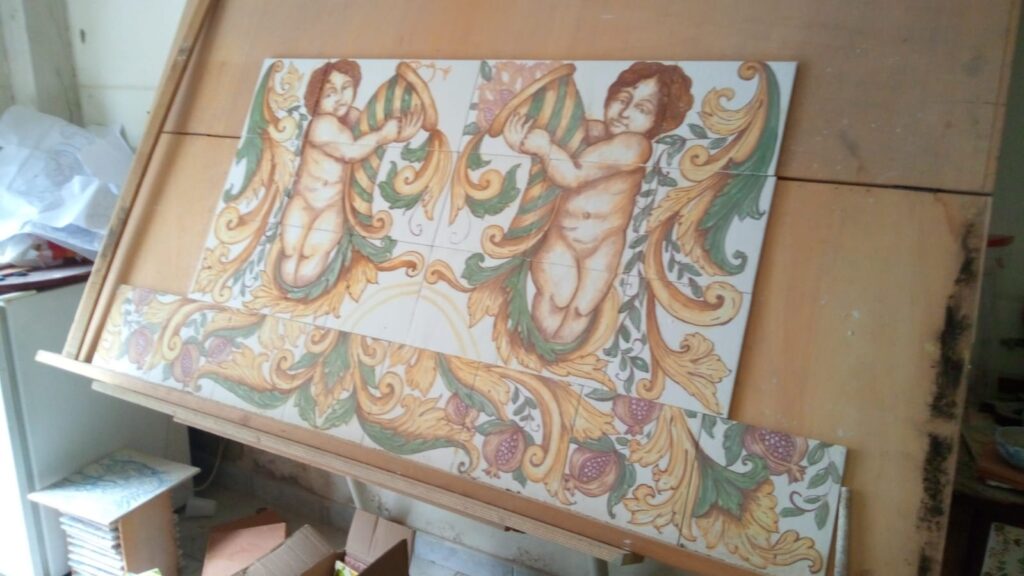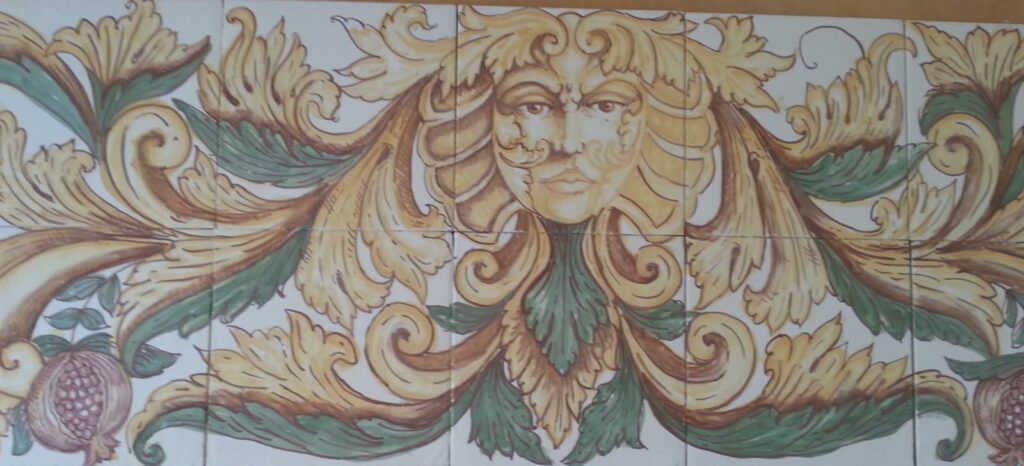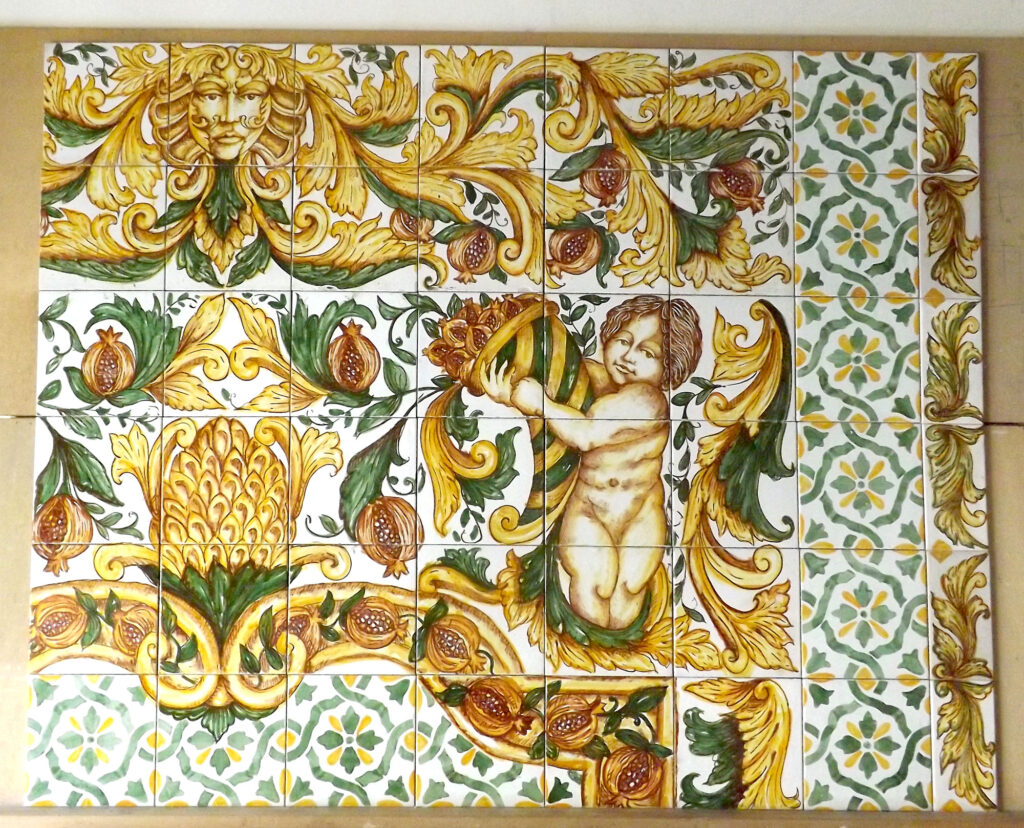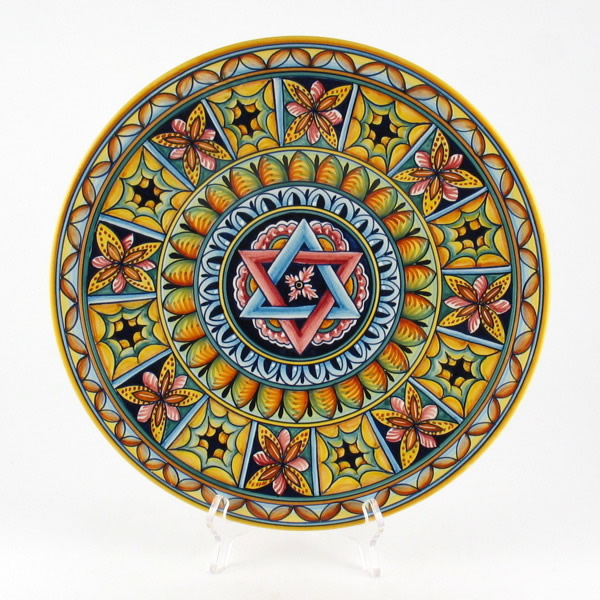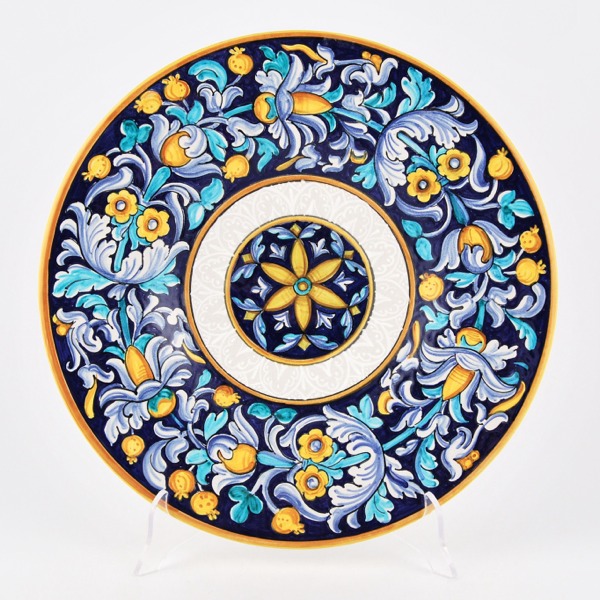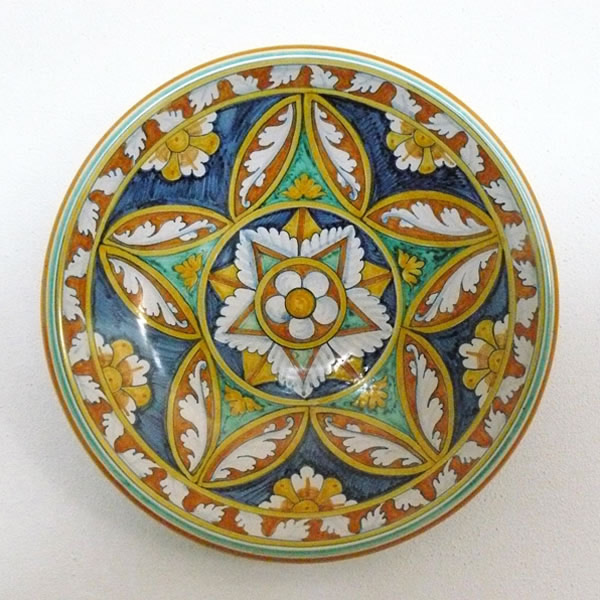Commissioning an Italian artist with a site-specific art project
The first time I saw ND Dolfi’s amazing Tuscan tiles, I was visiting the artist’s studio in Montelupo Fiorentino. It was over 15 years ago.
Silvano Dolfi had created large tile panels supported by free-standing iron structures. The multi-colored installations dotted his lawn, positioned so he could see them from the large windows of his beautiful Tuscan casale. Similar to giant paintings, they acted as a strange reversal of the common indoor-outdoor decoration.
I saw them again a few years later in his daughters’ workshop. They were grouped to form large, textured surfaces – each tile fighting for attention with its bold colors and unusual patterns.
By then, Natalia and Daria had followed in the steps of their famous father and started contributing to ND Dolfi’s collections.
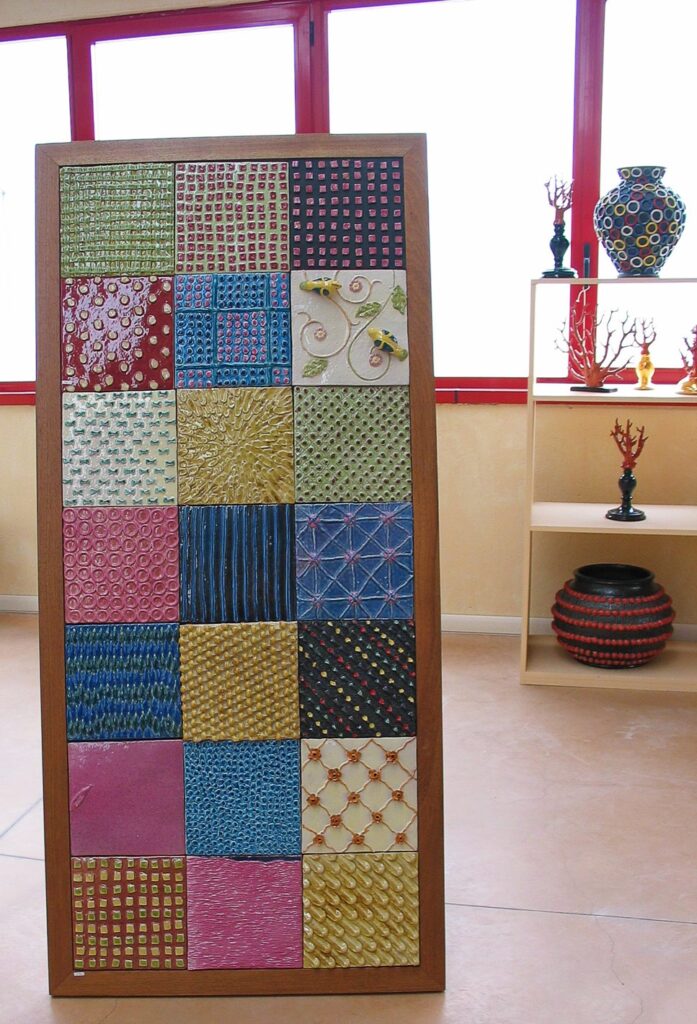
I knew I wanted those tiles in my life, but I had to wait until I had the right space and an inspiring décor idea. A few years later, I completed the renovation of my family’s country house and realized that the living room – its 15-foot high ceilings and large windows overlooking the garden – was the perfect space for a large tile panel.
However, it took me a few years of living in the house to know exactly what I wanted and how to achieve it. At that point, I was ready to commission Natalia and Daria Dolfi my ceramic wall panel.
Continue reading
